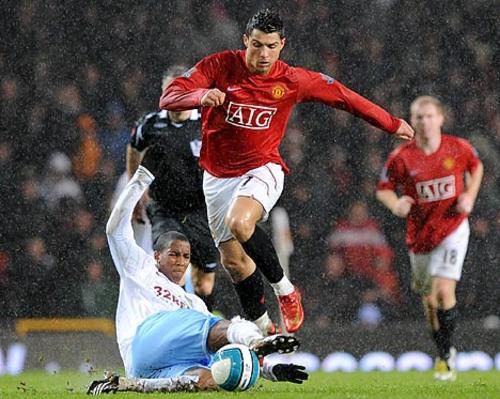 The Ultimate Guide to the Beautiful Game
The Ultimate Guide to the Beautiful Game
Ask anyone what's the second universal language after English, and they will confidently and enthusiastically answer: soccer. If you want to have a laugh then ask them what is soccer, and you will be met with utter disbelief (how can there be anyone who hasn't heard of soccer?!) and 'definitions' in the line of: it's football, man, it's a sport, 'the biggest sport in the world'.
If you are not much of a soccer fan but want to understand the game, here is what you need to know.
A soccer match is played on a pitch that usually measures 105 by 68 metres. A match can only be played by two teams, each with 11 players consisting of a goal keeper, defenders, strikers and mid fielders. The number of defenders, strikers and mid fielders in each match will be determined by the coach using what is called a system, for example 4-4-2 (4 defenders, 4 strikers and 2 mid fielders), 3-4-2 or 4-5-1. Each set of players performs different tasks and the players¿ positions determine how they manoeuvre around the soccer pitch.
The Rules of Soccer
Each soccer team is supposed to wear soccer gear which is colour coordinated in order for the players to identify their team mates and for the observers (fans, referees, commentators, adjudicators, and so on) to distinguish the teams playing. For a game to run smoothly and to ensure that the soccer rules are adhered to at all times, a referee and assistant referee are employed. On average, a soccer match lasts for 90 minutes, divided into two 45 minute long segments. After the first 45 minutes the match is paused for a 15 minute interval, called half-time. After 90 minutes the referee is allowed to extend the match for 3-5 minutes.
The main rule is that no player, except the goal keeper, is allowed to touch the ball with hands. Only if the ball is kicked outside the field of play a player identified by the referee is allowed to throw the ball back into the pitch using his hands. A common foul in soccer is an offside which is called only on the attacking side of the field. You may be wondering "what is an offside?" This occurs when the striker goes behind the line of the defenders before the ball has been kicked or fed to them. A referee, upon observation, will pause the match and grant the opposing team a free kick.
Soccer can be a dangerous sport and players need to follow the rules to avoid common soccer injuries. The most common injuries include collisions with other players, with goal posts, with the ground or with the ball. Additionally, sprained ankles and knee ligaments are also common injuries which prohibit players from partaking in any game until they are fit to play again. The rarest but most severe injuries entail lower leg and tibia shaft fractures.
Who Does What in Soccer
Goal keepers aim to ensure that the strikers from the opposing team don't get the ball behind the goal line (termed saving) and score. In addition to that, a goal keeper is responsible for clearing, directing the defence and distributing the ball (i.e. kicks or throws the ball to his team mates after a save). As the farthest player at the back of the field, goal keepers are able to observe where defenders should position themselves.
Defenders must ensure that they close any leeway that the strikers in the opposing team could use to get to the goal line and score goals.
Strikers get fed the ball by mid fielders and their main aim is to score the goals.
Mid fielders main aim is maintaining possession of the ball, taking the ball from the defenders of the opposing team and feeding it to the strikers.
Referees ensure that all players adhere to all the basic and intricate rules of the game. The referee also officiates fouls and goals.
Coaches plan and supervise training to develop their players¿ fitness and soccer skills. Furthermore, they study the competition and devise tactics to ensure their team comes out victorious in each game. A coach also selects the team that will play in all matches.
So now that you have all the basics, get your kit on and go score some goals.